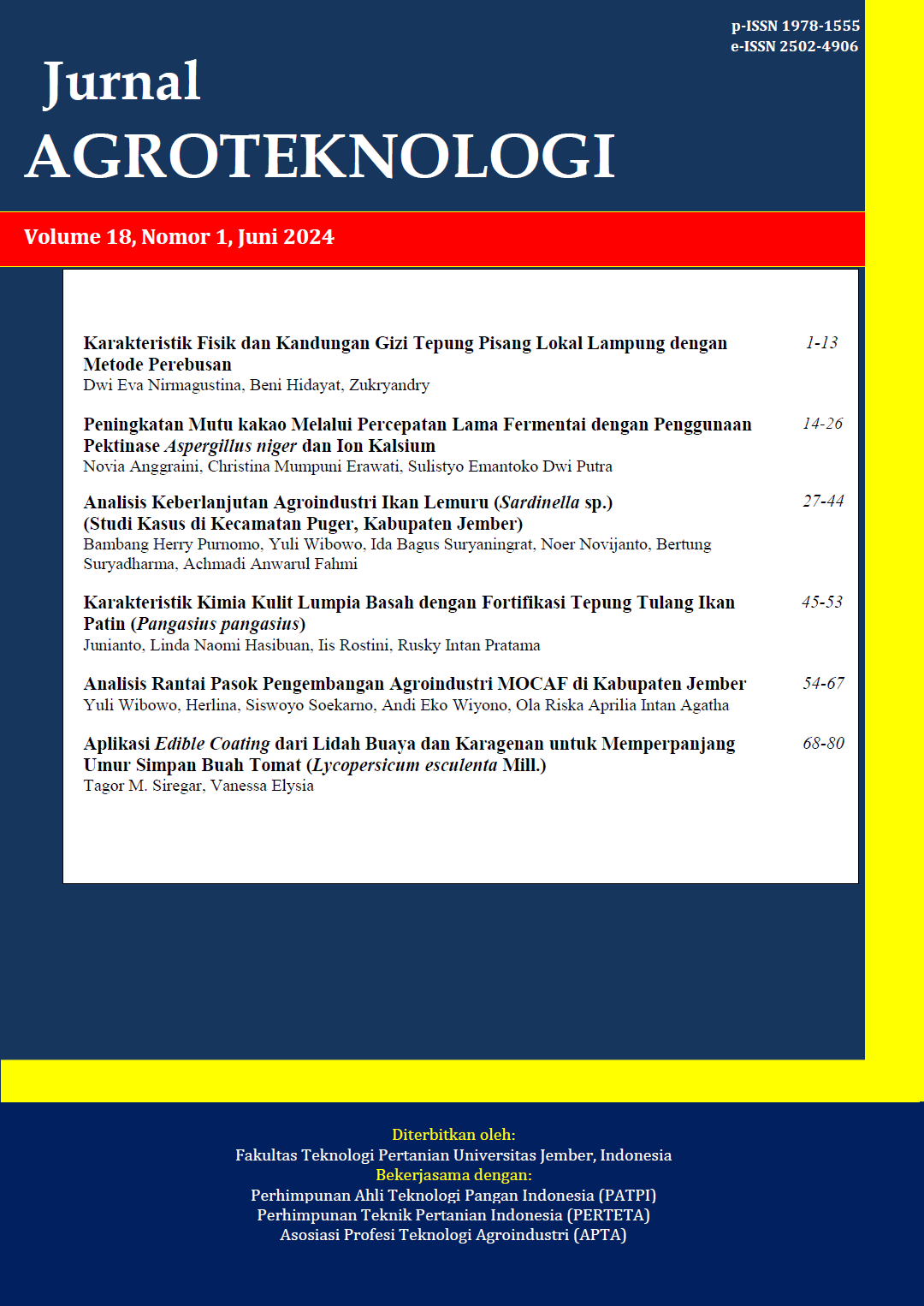Karakteristik Fisik dan Kandungan Gizi Tepung Pisang Lokal Lampung dengan Metode Perebusan
Physical Characteristics and Nutritional Content of Local Banana Flour Grown in Lampung Province by Boiling Method
Abstract
Lampung Province is the third largest banana producer in Indonesia with various types of bananas. It affects the differences of physical characteristics and nutritional content. Besides the type of banana, the processing can also affect the differences in its characteristics. The objective of the research was to determine the physical characteristics and nutritional content of banana flour from 8 types of bananas grown in Lampung Province as a source of local flour with the boiling method. The study was designed in a completely randomized block design with 3 replications. The results showed that the type of banana affected the physical characteristics and nutritional content of banana flour. Nangka bananas had the highest yield (42.06%) and muli bananas had the lowest yield (24.45%). Ambon kuning and tanduk had the highest degree of whiteness (44.60 and 41.20) and this is influenced by the color of the black pith. Muli banana flour was the highest protein content (3.54%). Fat content in nangka banana flour is the highest (1.09%). Ash of muli banana and ambon banana flour were the highest content (2.99% and 2.68%). Crude fiber of muli banana flour and kepok manado banana flour were the highest content (3.17% and 3.21%). The starch, amylose, and ratio of amylose/amylopectin of kepok manado and tanduk banana flour were the same and the highest content (respectively ranging between 74.53–76.29%, 26.18–28.92%, and 0.35–0.41). Vitamin C and total acid in local banana flour ranged from 0.51–2.34 mg/100 g and 0.62–2.25 respectively, muli bananas had the highest content of vitamin C and total acid with values of 2.34 mg/100 g and 2.25%. The boiling process can be applied as one of pre-treatment before making local Lampung banana flour.
Keywords: banana flour, boiling method, local banana, nutritional

This work is licensed under a Creative Commons Attribution-ShareAlike 4.0 International License.
Jurnal Agroteknologi has CC-BY-SA or an equivalent license as the optimal license for the publication, distribution, use, and reuse of scholarly work. Authors who publish with this journal retain copyright and grant the journal the right of first publication with the work simultaneously licensed under a Creative Commons Attribution-ShareAlike 4.0 International License that allows others to share the work with an acknowledgment of the work's authorship and initial publication in this journal.
 JURNAL AGROTEKNOLOGI
JURNAL AGROTEKNOLOGI 










.png)

